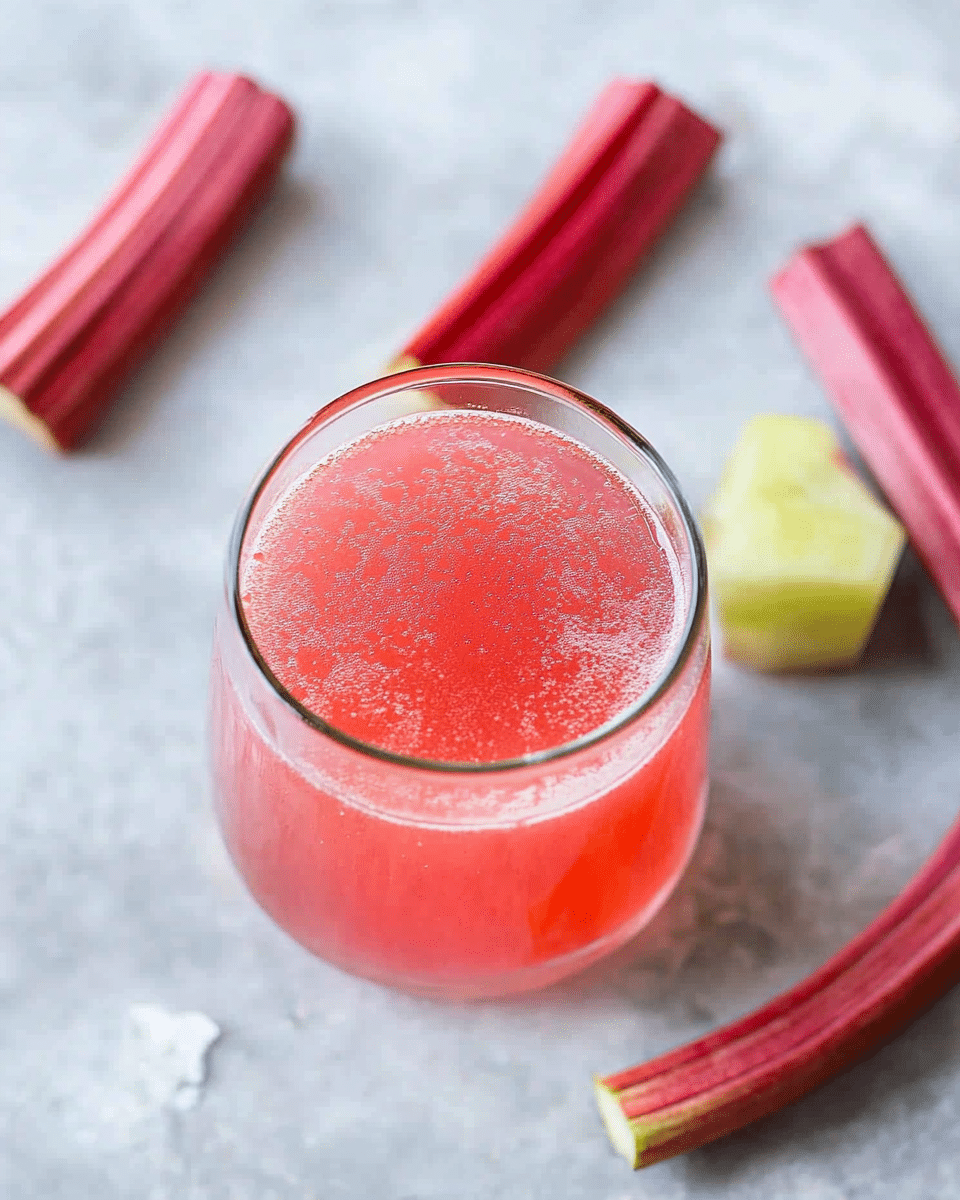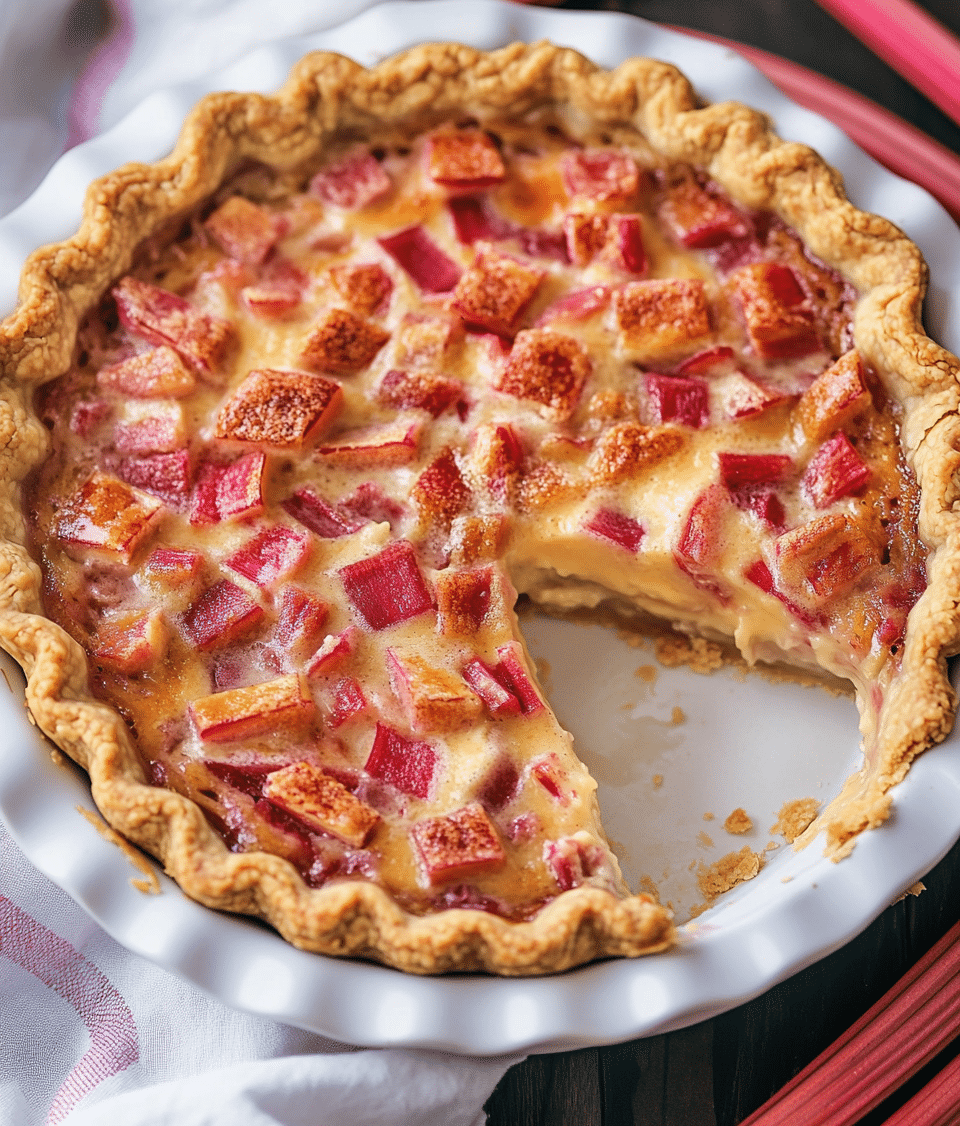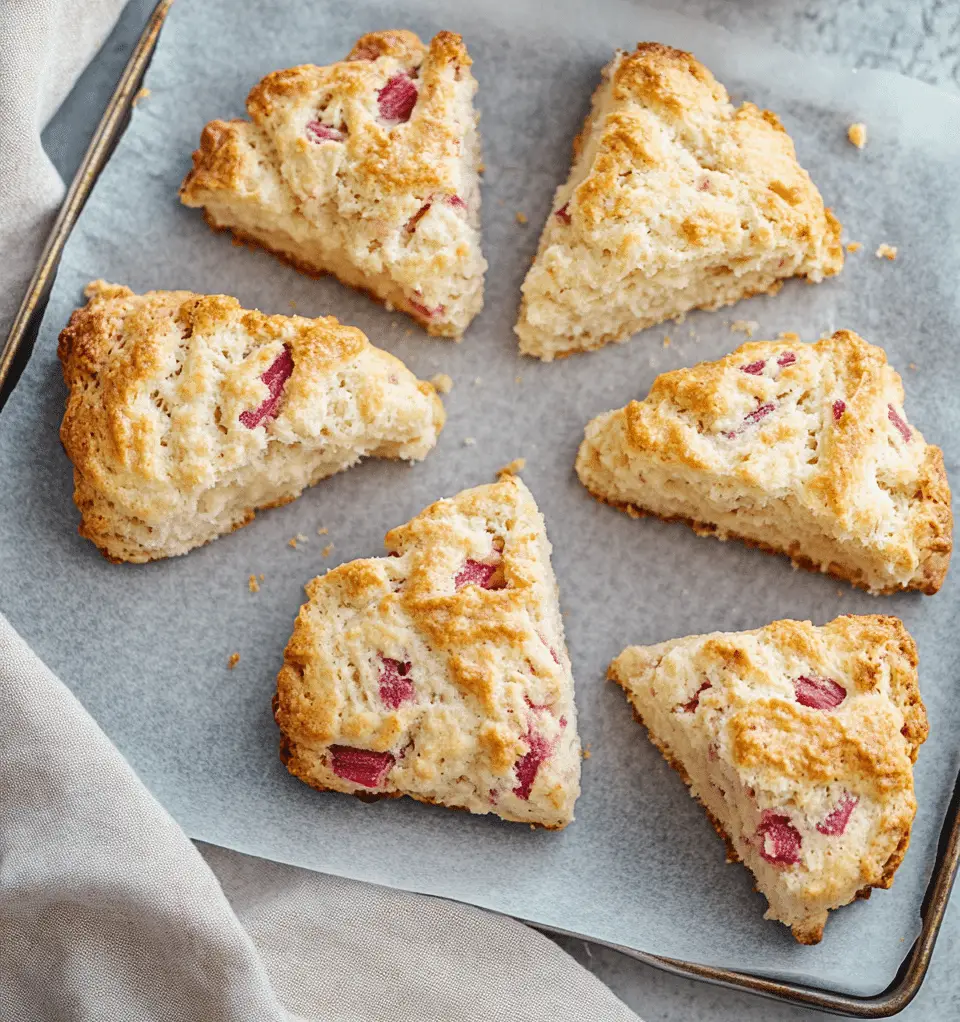A bright and tangy homemade rhubarb simple syrup is a perfect way to add a unique fruity twist to your drinks and desserts. Easy to make with just a few ingredients, it’s ideal for cocktails, lemonades, or drizzling over pancakes and ice cream.
FULL RECIPE
Ingredients
- 2 cups chopped fresh rhubarb
- 1 cup granulated sugar
- 1 cup water
- 1 teaspoon lemon juice (optional, for brightness)
Directions
- Combine the chopped rhubarb, sugar, and water in a medium saucepan.
- Bring the mixture to a boil over medium heat, stirring occasionally to dissolve the sugar.
- Reduce the heat and let it simmer gently for about 15 minutes, until the rhubarb is very soft and the syrup is infused with flavor.
- Remove from heat and let cool slightly.
- Strain the syrup through a fine mesh sieve or cheesecloth into a clean container, pressing down on the solids to extract as much liquid as possible.
- Stir in lemon juice if using.
- Refrigerate the syrup in a sealed container for up to 2 weeks.
Nutritional Information
- Calories: 70
- Total Fat: 0g
- Saturated Fat: 0g
- Cholesterol: 0mg
- Sodium: 0mg
- Total Carbohydrates: 18g
- Dietary Fiber: 0.3g
- Sugars: 17g
- Protein: 0g
The History of Rhubarb Simple Syrup
Rhubarb has been cultivated for centuries, originally prized for its medicinal properties before becoming a popular culinary ingredient. Simple syrup, a mixture of sugar and water, has long been used to sweeten beverages and desserts. Combining rhubarb with simple syrup is a relatively modern innovation that showcases rhubarb’s tartness while adding a smooth sweetness, creating a versatile syrup with a bright flavor that elevates many recipes.
Nutritional Benefits of Rhubarb
Rhubarb is low in calories but rich in essential vitamins like vitamin K and vitamin C. It also contains antioxidants and dietary fiber, which contribute to overall digestive health. While the syrup itself is sweetened and higher in sugar content, it still carries some of the health benefits of rhubarb, such as its anti-inflammatory properties and potential to support bone health.
Flavor Profile and Culinary Uses
Rhubarb simple syrup is known for its unique balance of tartness and sweetness. Its tangy flavor makes it an excellent addition to cocktails, lemonades, iced teas, and sparkling waters, adding complexity and brightness. It can also be used as a topping or flavor enhancer for desserts like cakes, ice cream, yogurt, or pancakes.
How to Store Rhubarb Simple Syrup
Proper storage is key to maintaining the flavor and safety of homemade rhubarb simple syrup. It should be kept refrigerated in an airtight container to prevent spoilage. Typically, it will last up to two weeks in the fridge. For longer storage, it can be frozen in ice cube trays and thawed as needed, preserving its fresh taste for months.
Variations and Flavor Enhancements
The basic recipe can be customized with additional flavors such as fresh ginger, vanilla bean, or herbs like mint and thyme. Adding a splash of lemon or lime juice enhances the tartness, while spices like cinnamon or star anise can add warmth. These variations allow you to tailor the syrup to different drinks or dishes.
Rhubarb Simple Syrup in Mixology
Bartenders often use rhubarb simple syrup to create unique cocktails that stand out with their bright color and sharp taste. It pairs beautifully with gin, vodka, or sparkling wine, and can be combined with other syrups or fresh fruit juices to craft complex flavor profiles. Its natural acidity also balances sweetness in drinks.
Health Considerations and Sugar Content
While rhubarb syrup offers some nutritional benefits, it is still a sugar-rich product. Those monitoring their sugar intake should use it sparingly. For a lower-sugar option, you can experiment with alternative sweeteners, although this may change the texture and flavor. Moderation is key to enjoying rhubarb syrup as part of a balanced diet.
Seasonal Availability of Rhubarb
Rhubarb is typically in season during spring and early summer, which is the best time to make fresh syrup. Using fresh, in-season rhubarb ensures the syrup is vibrant and flavorful. However, frozen rhubarb can also be used if fresh is not available, allowing you to enjoy the syrup year-round.
Tips for Making the Best Syrup
To maximize flavor, chop the rhubarb into small pieces and simmer gently to extract the natural juices fully. Avoid boiling too aggressively to prevent bitterness. Straining well is important to achieve a smooth syrup. Also, adjusting sugar levels based on personal taste and rhubarb tartness can improve the final product.
Pairing Rhubarb Syrup with Foods
Beyond drinks, rhubarb syrup can enhance a variety of dishes. It works well drizzled over fresh fruit salads, pancakes, waffles, or yogurt. It can also add a surprising twist when used as a glaze for roasted meats like pork or chicken, where its tartness balances savory flavors.
Environmental and Ethical Aspects
Growing rhubarb is relatively sustainable as it requires little water compared to many fruits and thrives in cooler climates without heavy pesticide use. Making homemade syrup reduces reliance on commercially processed sweeteners and syrups, contributing to a more eco-friendly kitchen practice.
Rhubarb Syrup as a Gift Idea
Homemade rhubarb syrup makes an excellent thoughtful gift for food lovers and cocktail enthusiasts. Bottled attractively with a personalized label, it offers a unique and artisanal present that showcases seasonal flavors and homemade care, perfect for holidays or special occasions.
Rhubarb Simple Syrup and Culinary Creativity
Rhubarb simple syrup encourages culinary experimentation because of its bold, distinctive flavor. Chefs and home cooks alike use it as a base for creating new recipes, from vinaigrettes and marinades to desserts and cocktails. Its ability to complement both sweet and savory dishes makes it a versatile tool in the kitchen, inspiring creativity and innovation in flavor combinations. Exploring different pairings with rhubarb syrup can lead to exciting new dishes and personalized signature drinks.
Conclusion
Rhubarb simple syrup is a versatile, flavorful, and relatively easy-to-make ingredient that brings a fresh twist to beverages and foods alike. Its unique balance of tart and sweet, combined with the health benefits of rhubarb, makes it a worthy addition to any kitchen. Whether used in cocktails, desserts, or savory dishes, this syrup offers endless opportunities for creativity and enjoyment. By understanding its background, storage, variations, and uses, you can make the most of this bright and delicious syrup throughout the year.








